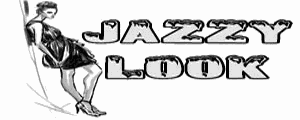Every one of us might have heard the saying “fashion
reflects the temper of the times.” When a country is politically stable and
economically affluent, frivolous fashion dominates over other trends. During an unstable period decent-looking,
practical and more sensible trends prevail.
Changes in economy bring about
corresponding changes in apparel companies, cell phone companies, mainstream
music, media and entertainment. Fashion, of late, has headed in new directions
in order to make progress in youth market preferences in styles, cuts,
silhouettes, colors, price posts, etc. Dress is not a mere object and material
people put on their bodies. It is much more than that. It can be a symbol that
stands for meanings which are not inherent in the material or object. In other
words, the physical body when dressed reflects the “social body” or the
surrounding social system.  |
| Image Source: Flickr |
When we look
at the history, tensions and societal relationships that exist between different
social groups reflected in the dress people wore. The poor rarely had access to
new clothing. Before the 20th century, poor men in Europe and
America used to own only what is on their back and that too was handed to them
by some more affluent people. Therefore, cloth became a form of currency soon
and it was also used as payment for services. In the pre-industrial period
clothing was synonymous with a person’s position in the social structure. After
the industrial revolution and machine-made clothing, the effect of social and
political stratification on fashion was transformed. The shift from agrarian to
city life changed the perspective of how one’s social status was determined.
Economists
and sociologists like Thorstein Veblen and Georg Simmel opined that in the industrialized
world women’s status in society was directly linked to the display of their
husbands’ wealth. They also mentioned that people tend to imitate those
directly above them in order to move up the social ladder. It was clear that
people wanted to appear wealthier than they really were. Expensive clothing was
always inaccessible to the lower strata of the society. Hence, clothing was
also a form of social control and it maintained a hierarchy among people. Inaccessibility
to expensive clothing also reflected inaccessibility of political and
socioeconomic status and freedom. Fashion was also a status symbol throughout
the human history by which a visible gap between the “have’s” and “have not”
was shown to the world. Those who could afford expensive clothing were showing
the lower sections of the society that they had made it.
Fashion and
luxury are so intricately related. If the giants in the clothing industry and
the departmental stores go through an economic slow-down, its repercussions can
be seen in their manufacturing or production units. If sufficient investment is
not made for a large scale production of apparels, the clothing industry can
only cut down the production and try to sell out all its products in order to
avoid a further loss. The Fashion industry is always linked to the economic
status of the home country. It is unable to escape from the fatal clutches of
the economy irrespective of whether it is sinking or flourishing. With the
pervasive effect of the internet on our lives, there are only a minute
percentage of people who manually go to textile shops and buy clothing.
It is
predicted that the fashion industry will have to go through a set-back in the
coming years. All sections of the fashion industry face continued pressure to
adapt and evolve. Any field of activity which is static has no future. All
industries and companies need to constantly update themselves in order to stay
intact in the field. The idea of knowing how trends come and go helps an
individual to become up to date and in tune with the changing times. Fashion is
not limited to the clothes that people wear because the fashion is complete only
when it includes accessories like bags, shoes, jewelry, scarf and hats. To be
able to stay at pace with the changing trends, one has to be prepared with the
most appropriate clothes and accessories right at the perfect time. It is
obvious that seasonal changes, changes in color and influence of people make
way for changes in the fashion industry.
Apart from
the social and climatic conditions that have an impact on the fashion industry,
slight changes in the economy bring about remarkable changes in the field. If
the company undergoes a slow-down, or if the country goes through a rough
patch, changes in the fashion industry are very much inevitable. There has to be
a ratio which is directly proportional between the demand and supply of
materials for any industry to thrive. Economic issues not only shape women’s
fashion trends, but also are capable of either uplifting or totally collapsing
the fashion industry. Production units need to be abreast with the current
trends and the market situation. They should always be ready to bring about
timely changes in the way they produce and distribute the goods.
Author bio: James Lopez
I’m
James Lopez is concerned in moderations and the preservation of essay writing companies an online community that serves as a stage for
college students to cooperate and clarify their doubts about their essay writing
requirements.



0 comments:
Post a Comment
Please Do Not Spam.